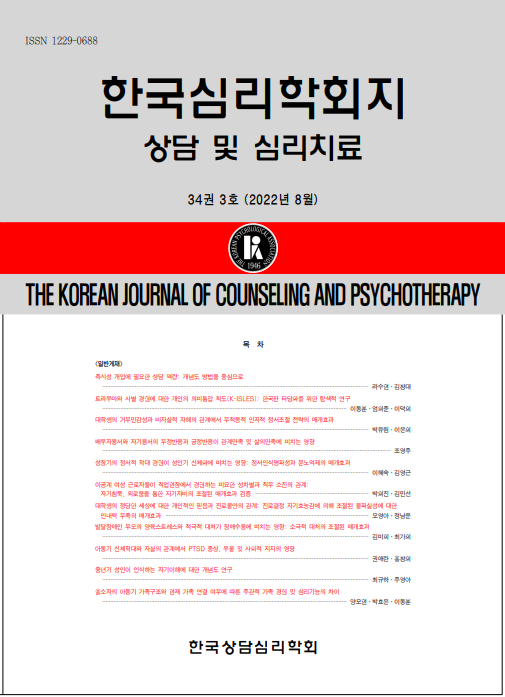open access
메뉴
open access
메뉴 ISSN : 1229-0688
ISSN : 1229-0688
This paper describes briefly the history of the studies on silence from the psychoanalytical and counseling viewpoints. It, then, reviewed the definition and effect of silence (pause?) as well as factors affecting it. The silence was defined in terms of the length of silence and the person involved. The length of silence was discussed by comparing its classification in counseling and psychoanalytical areas with that in linguistics. With respect to the type of silence and the person involved, comparison was made between Hill's (1978, 1981) definition and that of Matarazzo and others (1967, 1968). Hill classified the silence only in terms of the individual person involved, whereas Matarazzo et al divided it into four types according to the context of the conversation between two people. Most of the studies on the effect of silence in the area of psychotherapy report that the silence is closely related to the success, the empathy and the satisfaction on interview. The connection between the silence and the counseling process was made for the first time by Hill when he attempted to single out the effect of silence from the various response categories. This paper also discusses several possible reasons why the studies on the relationship between the silence and the counseling process revealed inconsistent results. On the educational arena, some studies pointed out that the students' general achievement and the quality of their response are significantly raised when the silence of 3-5 seconds in duration is used by teachers as a lecture technique. Factors affecting the silence such as the variation in reaction time latency and the complexity of the task are related to the length of silence. The reaction time latency synchrony is a concept Matarazzo et al introduced as a variable affecting silence. This concept indicates that when a person in a two-person conversation situation increases or decreases the reaction time latency, the other person reacts accordingly as well. This phenomenon proved to be universal in a 2-person interaction. Finally, this paper concludes that the study on silence is still on its infant stage without any established theory, discusses many methodological problems and suggests some future directions.
